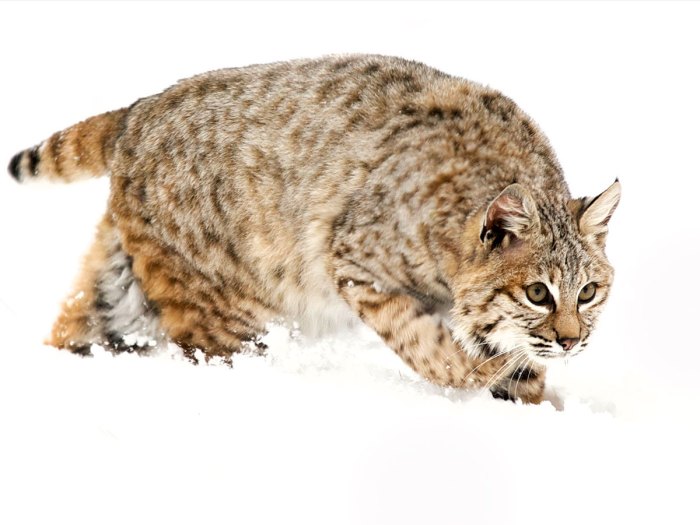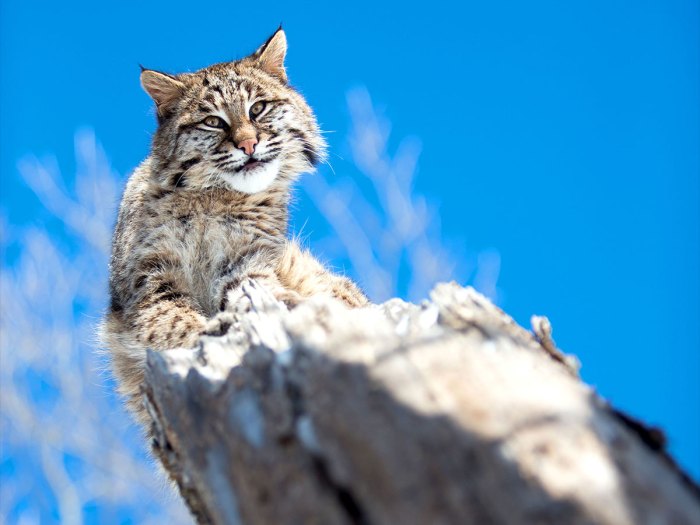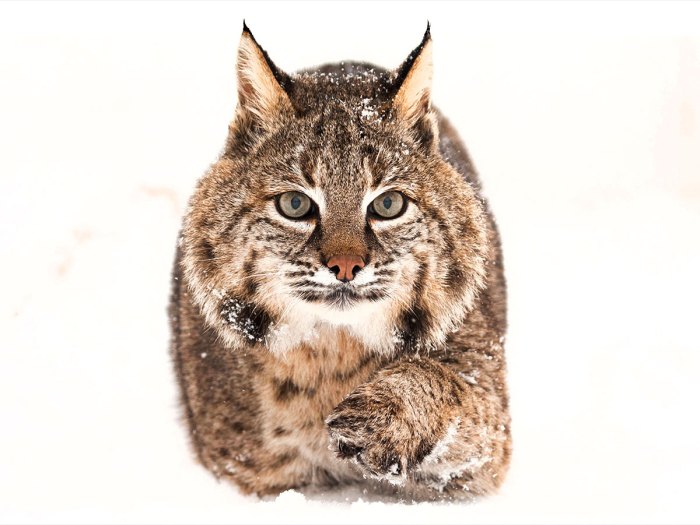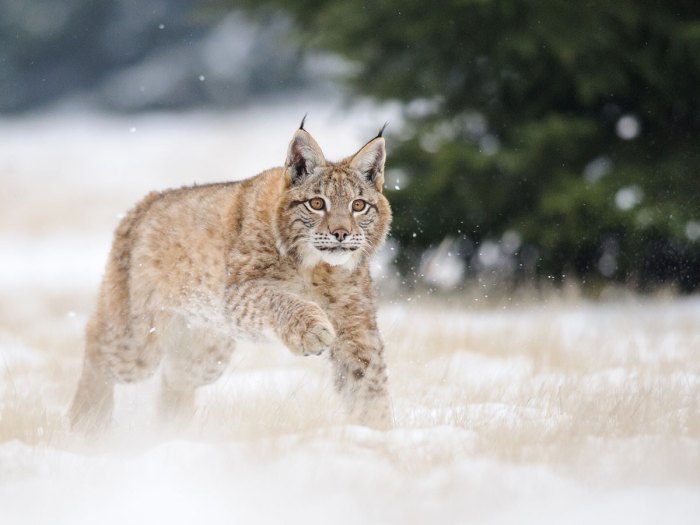Bobcats Are the Cats in Camo
Lurking in the vegetation, a brown feline with dark spots and stripes sits, camouflaged from approaching hikers. It’s early morning, and the bobcat would like to get in another round of hunting before going back to her den for a nap. The loud group passes the unseen cat, never suspecting that such a magnificent mammal is so close, just watching and waiting for them to go by.
COMMON BUT SECRETIVE
Found from southern Canada to Mexico, including all 48 contiguous states except one (sorry, Delaware!), bobcats (Lynx rufus) are the most common and abundant wild cats in North America. However, many people never see one, as they are quite secretive and are usually more active from dusk to dawn.
These small- to medium-sized felines, weighing 10 to 40 pounds (males are larger), are superb at hiding and stalking, making them excellent hunters. Like other cats, they are carnivores (meat-eaters) and prefer small mammals like rabbits and rodents. They also hunt small reptiles and amphibians, birds and even insects. Eggs are fair game, as are the remains of deer and other animals.

Although bobcats are named because of their short tail (2 to 8 inches long), all cats in the genus Lynx (four species worldwide) share this trait. A long tail isn’t necessary for bobcats like it is for cheetahs, whose long tails help with balance at high speeds. Bobcats don’t do high-speed chases. Instead, they typically hunt from ground level, quietly stalking prey.
Large paws help in jumping, climbing and staying quiet. Large ears and prominent ear tufts help bobcats hear extremely well. They can hear small animals moving in grasses, under snow or in leaf litter, and they can also see well, relying less on scent for hunting.

SUPER MOMS
Bobcat moms typically give birth in spring or early summer to three kittens (after about a two-month pregnancy), and, like most other cats, they take care of their young with no help from the father. Bobcat mothers usually have several dens and move around with their kittens to keep them safe. Not staying in one place too long keeps the bobcats’ scent from getting too strong and attracting predators.
Dens might be inside hollow trees, in caves, under large rocks or in thick vegetation. The kittens stay with mom for eight months to a year, eventually learning how to hunt and what to eat. Bobcats can live up to 12 years in the wild. Adults are solitary and territorial, and tolerate each other only during mating, which typically occurs in winter and spring.

LUCKY ENCOUNTERS
If you’re very quiet outdoors, you might get lucky and see a bobcat. We’ll never forget one of our closest encounters, which occurred in the Rio Grande Valley in Texas. We just felt that someone was watching us while we were hiking, so we stopped. Sure enough, a bobcat was staring at us from behind some vegetation. After a short moment, he slowly walked off into the woods. We weren’t worried about our safety, as bobcats rarely get aggressive toward humans. We’ve even had one appear at our property in Florida, just sitting out in the open, grooming like a house cat!
Although bobcat numbers are relatively stable, some areas are still losing habitat quickly, and in these regions, bobcats are disappearing or are moving into less ideal locales, such as suburbs or other developed places. Bobcats need a large area to live, as ranges extend up to 20 square miles or more for males. So it’s still important to make sure we keep large, wild areas set aside for them and other wildlife.
4 Fast Facts About Bobcats
1. BOBCATS ARE BIG IN SOME NATIVE AMERICAN CULTURES. Tribes with bobcat clans include the Creek and the Chickasaw. To the Pawnee, the bobcat symbolizes a connection between Earth and the stars. Parents wrapped their babies in bobcat fur to bring celestial blessings. The Zunis made stone figures of bobcats to bring good luck during hunting.
2. Bobcats live in a WIDE RANGE OF HABITATS, from deserts to forests and swamps.
3. Bobcats may travel up to 7 MILES IN ONE EVENING as they search for food and patrol their territory.

The Canada Lynx
4. THE CANADA LYNX (Lynx canadensis) is a close and slightly larger cousin of the bobcat. It lives in Alaska, Canada, parts of the northern U.S. and the Rocky Mountains south to Colorado. It can spot prey in the dark from 250 feet away.
Leave a Comment